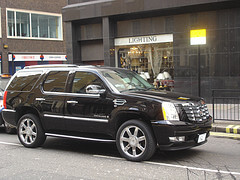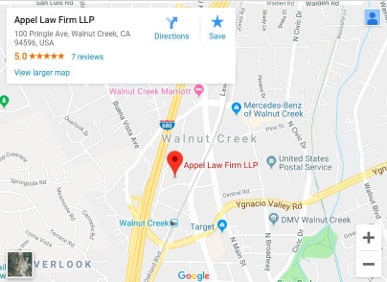 In an unfortunate accident that happened on New Year’s Eve, a driver of a popular ridesharing service, struck a six-year-old girl as she was crossing the street with her mother and brother in the Tenderloin neighborhood of San Francisco. Last week, the driver was arrested on charges of vehicular manslaughter, gross negligence, and failing to yield to pedestrians on a crosswalk. Today the first wrongful death lawsuit has been filed against the driver, and the company. The arrest raises questions on two important concepts in personal injury law: criminal negligence, vicarious liability, insurance coverage.
In an unfortunate accident that happened on New Year’s Eve, a driver of a popular ridesharing service, struck a six-year-old girl as she was crossing the street with her mother and brother in the Tenderloin neighborhood of San Francisco. Last week, the driver was arrested on charges of vehicular manslaughter, gross negligence, and failing to yield to pedestrians on a crosswalk. Today the first wrongful death lawsuit has been filed against the driver, and the company. The arrest raises questions on two important concepts in personal injury law: criminal negligence, vicarious liability, insurance coverage.
Criminal Negligence
When is an act a crime? In most criminal cases, the justice system prosecutes an individual who intended to do something that the government – either state or federal – has concluded is wrong. In other words, he must have a guilty mental state, or “mens rea,” when committing the criminal act. The concept of “mens rea” is used in the justice system because as a society, we believe that only those people that are morally culpable should be punished.
Being careless is not a crime. If you, for instance, unintentionally cause a car accident because you were not paying attention, and the person you hit suffers whiplash, you will probably not be held criminally responsible for the accident. You will be held responsible in civil court and have to compensate the victim for the harm you caused, but you will not go to jail. This is an example of negligent behavior.
There are, however, acts that are so careless that they rise to the level of criminal activity. If you act in a way that recklessly disregards a substantial unjustifiable risk, you have acted with the mens rea necessary to be held criminally accountable for your actions. This is called criminal negligence, or gross negligence. In the case of the ride-sharing driver that killed the girl, a judge will decide if the driver’s inattentiveness amounted to gross negligence.
Vicarious Liability
A second, more contentious, issue is whether the ride-sharing service can be held responsible for the acts of the driver. Although much will depend on the contractual relationship between the company and drivers that use the app, the general concept making employers liable for the actions of an employee is called vicarious liability. As discussed in a recent Forbes article, the distinction between ride-sharing services drivers being employees or independent contractors creates large legal implications.
Employers are vicariously liable for the negligent acts of employees if they are acting within the scope of their employment. If the action is not within the course of employment, then the employer will not be held liable. For instance, if a delivery company driver is speeding to deliver a package on-time because his supervisor pressured him to hurry, and the driver subsequently hits a pedestrian, the company will probably be held liable. If the driver commits spousal abuse at his home, however, the company will not be held liable. Vicarious liability can not only increase the compensation a victim may receive, but it can also change a company’s policy that has a deleterious effect on society.
Insurance Coverage
There has been increased discussion lately on what insurance coverage is afforded to drivers who work for ‘transportation network companies,’ after a driver for Uber struck and killed a six-year-old in San Francisco on New Year’s Eve. Although the company issued a statement expressing regret for the accident, it said that, although the driver had completed a trip arranged by Uber earlier in the day, when the driver hit the girl he was not providing Uber services, and was therefore not covered under any of the insurance that Uber provides.
UberX, along with Lyft and a few others, are transportation network companies that use online platforms to connect passengers with drivers using personal vehicles. These businesses offer people opportunities to meet up with others who are willing to drive them for a ‘donation’ via an online platform that matches the passenger’s needs to the driver’s needs. Using a ride-share service like this is significantly cheaper than hiring a traditional cab, and the business offers everyday people with a car the opportunity to make a little extra money.
Uninsured or Under-Insured Drivers
Although these Transportation Network Companies are required to maintain liability insurance, coverage for medical payments and collision insurance does not exist against uninsured or underinsured drivers. These policies are discretionary, which leaves many drivers that work for companies like Uber having to foot the bill for any car damages caused by under-insured or uninsured drivers, or even injuries the driver may have suffered in an accident.
Further, it has recently been discovered that insurance companies are dropping people from their individual policies if they discover the driver is working for a transportation network company. This puts drivers in a tough spot. They cannot make a claim through the company for which they work, and if they make a claim through their own personal insurance, they may not only be denied, but may lose their coverage altogether.
The Department of Insurance in California recently published a notice stating that people could lose insurance coverage, and may not have coverage in certain incidents involving a car accident, if the driver works for a transportation network company.
Transportation Network Companies Respond
In response, these companies have created the Peer to Peer Rideshare Insurance Coalition to cooperate with new businesses in the industry and insurance companies to find new strategies for insuring drivers.
Lyft also recently announced it plans to provide extended insurance for drivers, with a $50,000 maximum collision insurance, $1 million worth of coverage if a driver is hit by an uninsured motorist who is at fault, and $1 million worth of coverage if a driver is hit by an underinsured motorist who is at fault.
Everyone knows that California is the testing ground for all things technology related, and it seems like transportation network companies will continue to grow across the United States. Regardless, though, driving without full insurance is not only dangerous, but can cost you a ton of money.
Thanks for reading Slice of Appel PI today! We hope that you will continue to read and share this information with others.
Photo Credit: Michi1308 via Compfight cc

Speak Your Mind